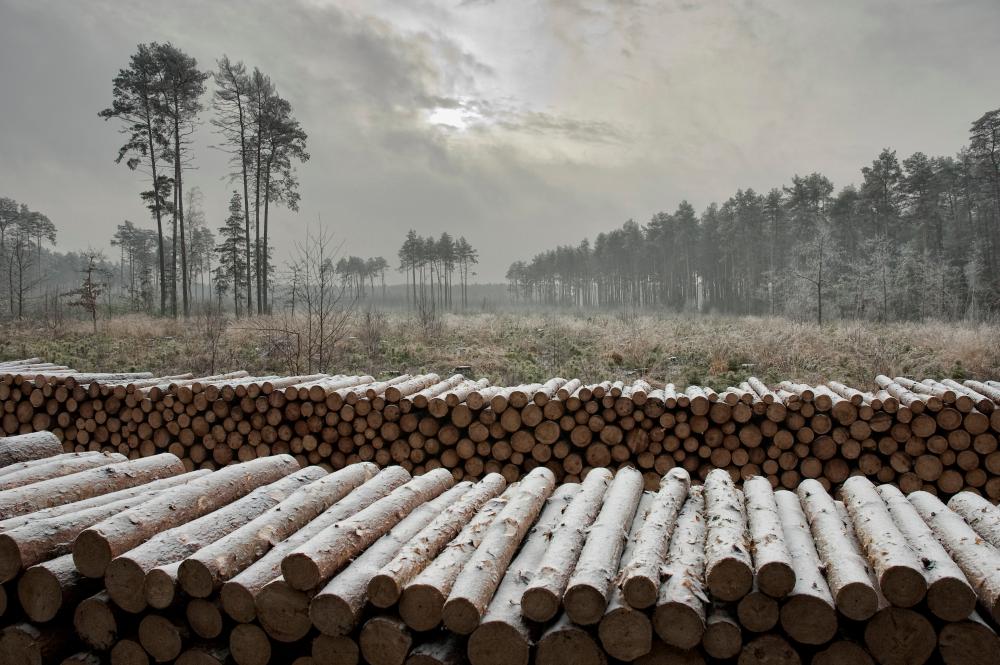 Asset Publisher
Asset Publisher
Sale conditions
Sale conditions of wood are specified by the regulation of Director – General of the Sate Forests.
Within the framework of the individual sale , the foresters try to meet the fast growing demand, because more and more people use wood in order to heat their houses. Contrary to general opinion, these are not only village people, even though they prevail among recipients. The growth of firewood demand is the result of occurrence of new housing estates built in the suburbs of large agglomerations, where houses are usually equipped in fireplace heating installations.
Firewood is not only the most ecological heat source, but also is much more attractive in respect of relation of price and electric efficiency, rather than cola, oil, gas or electric power.
In recent years, the Sate Forests increased the sale of firewood of one third – up to over 4 million cubic meters annually. Firewood is not only the most ecological heat source, but also is much more attractive in respect of relation of price and electric efficiency, rather than cola, oil, gas or electric power. Some of customers choose already prepared and cut into pieces wood, the others very willingly obtain it by themselves after arranging all details and fulfilling particular safety conditions, and after paying the fee; that concerns mainly so called "thinnings". Such a raw material is very cheap, that is why many people from village areas profit from such possibility.
 Asset Publisher
Asset Publisher
 Asset Publisher
Asset Publisher
Lasy Nadleśnictwa Łagów
Lasy Nadleśnictwa Łagów
Lasy nadleśnictw Łagów wraz z lasami sąsiednich nadleśnictw i kompleksami lasów innych form własności stanowią element zróżnicowanego krajobrazu świętokrzyskiego, który z uwagi na wysokie walory przyrodniczo – krajobrazowe, objęty został niemal w całości różnymi formami ochrony przyrody.
Lasy naszego nadleśnictwa usytuowane są:
· W II obszarze fizjograficznym – Europy Zachodniej,
· W trzecim podobszarze – Pozaalpejskim
· W strefie Lasów Mieszanych
· W prowincji Wyżyny Małopolskiej
· W podprowincji Wyżyny Środkowopolskiej
· W makroregionie wyżyny Kielecko – Sandomierskiej
· W mezoregionach Gór Świętokrzyskich, Wyżyny Sandomierskiej i Pogórza Szydłowskiego
Zgodnie z podziałem przyrodniczo- leśnym grunty Nadleśnictwa Łagów położone są w VI Krainie Małopolskiej, w 2 dzielnicy Gór Świętokrzyskich i należą do mezoregionu Łysogórskiego. Teren Nadleśnictwa podzielony jest na jedenaście leśnictw wchodzących w skład dwóch obrębów urządzeniowych: Łagów i Nieskurzów. Większość obszarów leśnych leży w terenach górskich (pasma: Jeleniowske, Orłowińskie, Ociesęckie, Cisowskie). Głównym gatunkiem lasotwórczym jest sosna, której towarzyszy jodła, buk oraz szereg innych gatunków.
Procentowy udział głównych gatunków lasotwórczych
Na terenie Nadleśnictwa występuje szeroki wachlarz siedliskowych typów lasów począwszy od borów suchych porastających ubogie, piaszczyste gleby, poprzez olsy rosnące na mokradłach do siedlisk wyżynnych i górskich.
Zestawienie udziału powierzchniowego siedliskowych typów lasu
|
L.p. |
Siedliskowy typ lasu |
Powierzchnia (ha) |
Udział % |
|
1 |
Bs |
7,15 |
0,05 |
|
2 |
Bśw |
2113,56 |
14,99 |
|
3 |
Bb |
1,78 |
0,01 |
|
4 |
BMśw |
700,43 |
4,97 |
|
5 |
BMw |
232,36 |
1,65 |
|
6 |
BMb |
27,97 |
0,20 |
|
7 |
LMśw |
1462,00 |
10,37 |
|
8 |
LMw |
146,44 |
1,04 |
|
9 |
LMb |
3,81 |
0,03 |
|
10 |
Lśw |
149,43 |
1,06 |
|
11 |
Lw |
58,50 |
0,41 |
|
12 |
Ol |
37,89 |
0,27 |
|
13 |
OlJ |
31,57 |
0,22 |
|
14 |
BMwyżśw |
42,32 |
0,30 |
|
15 |
LMwyżśw |
1942,72 |
13,78 |
|
16 |
LMwyżw |
347,93 |
2,47 |
|
17 |
Lwyżśw |
3074,63 |
21,81 |
|
18 |
Lwyżw |
228,43 |
1,62 |
|
19 |
LMGśw |
945,33 |
6,71 |
|
20 |
LMGw |
14,42 |
0,10 |
|
21 |
LGśw |
2530,14 |
17,94 |
|
Razem: |
14098,80 |
100,00 |
|







